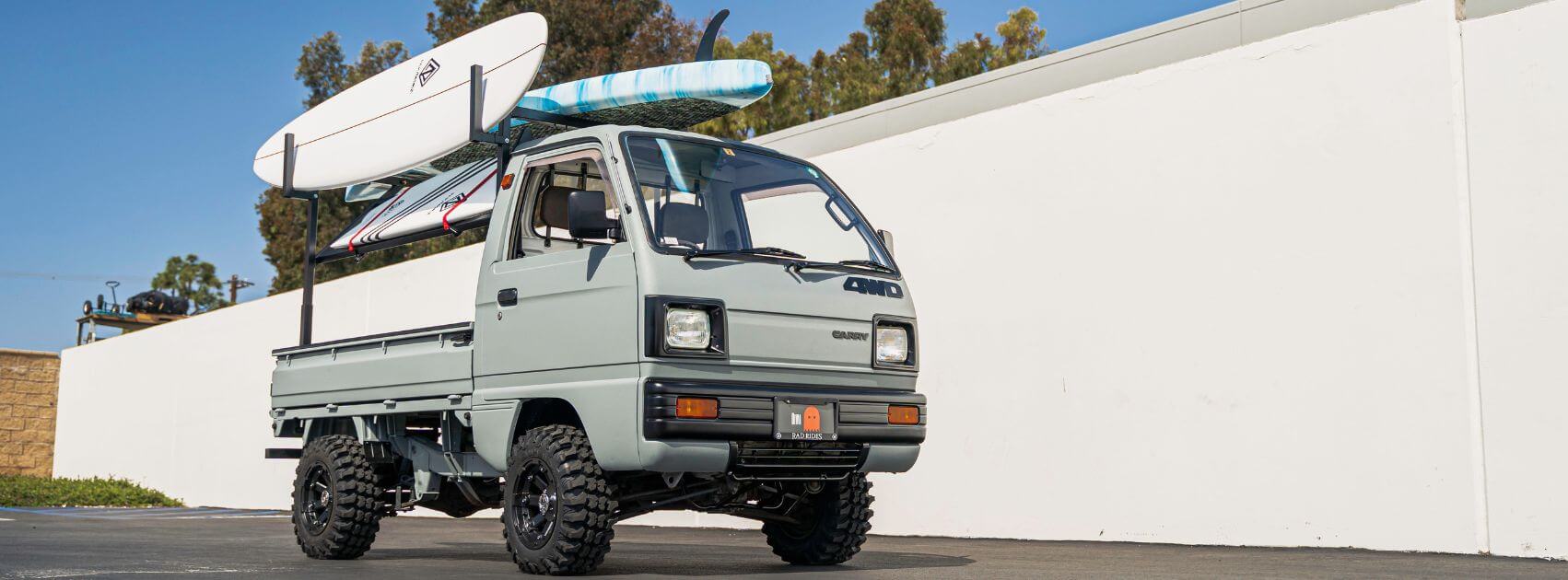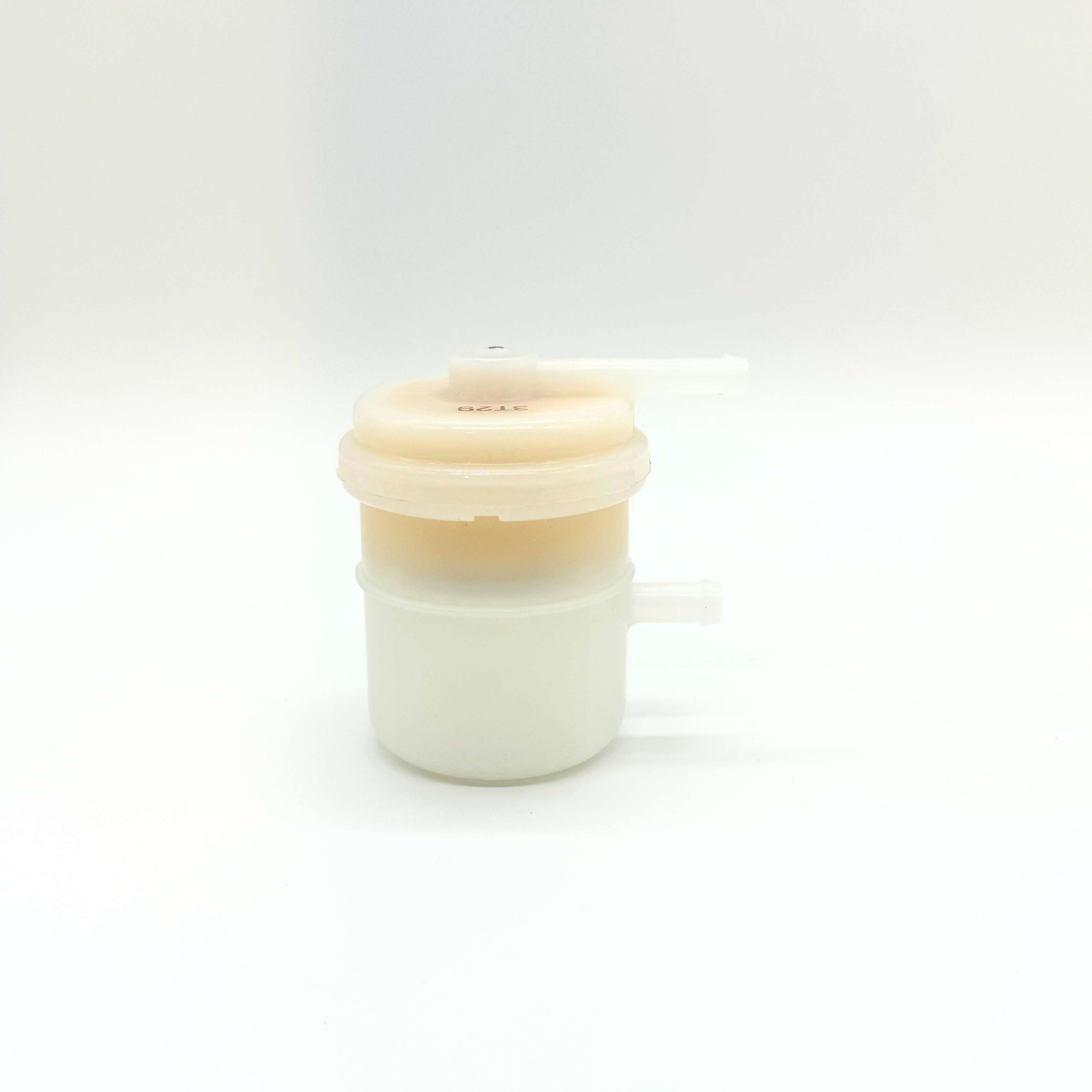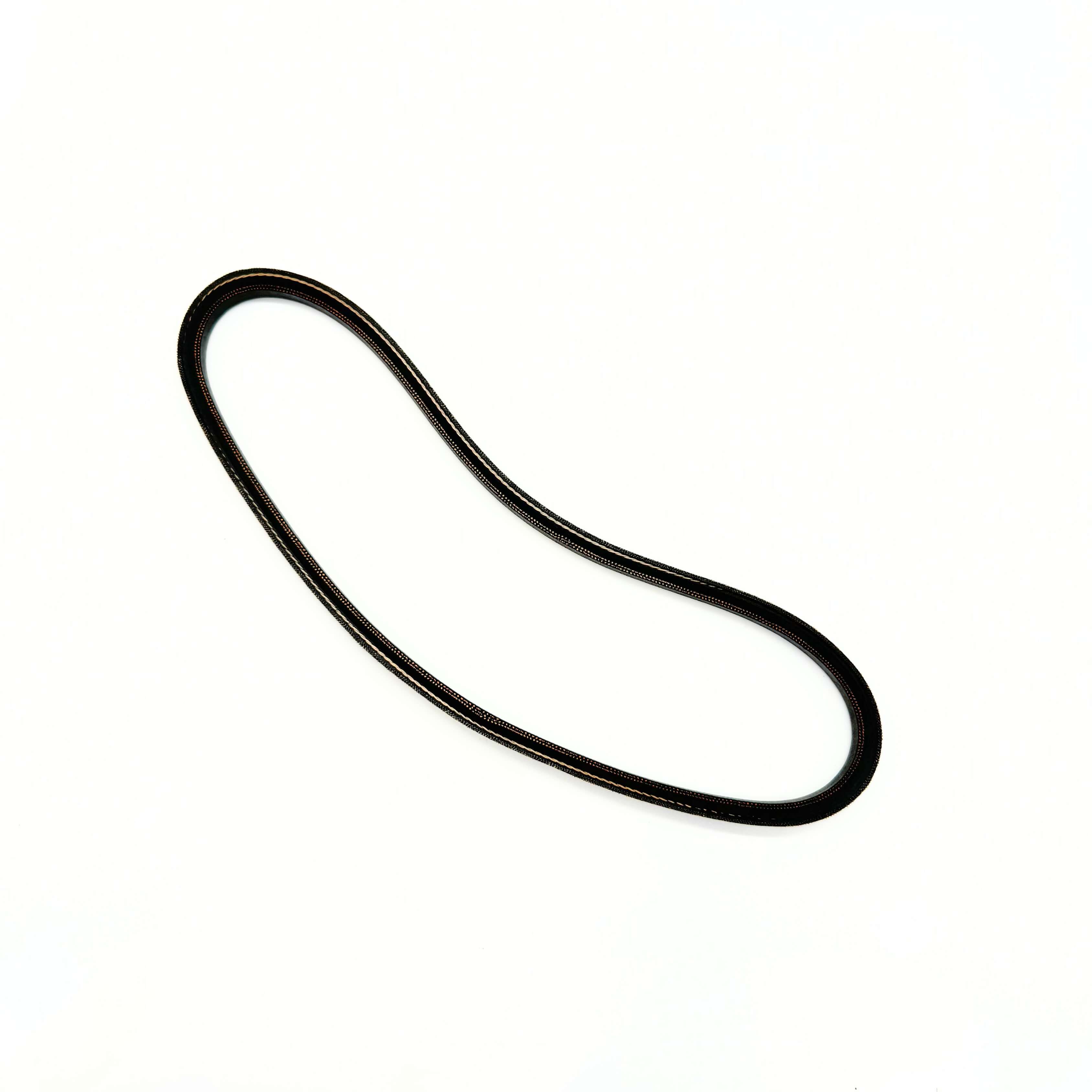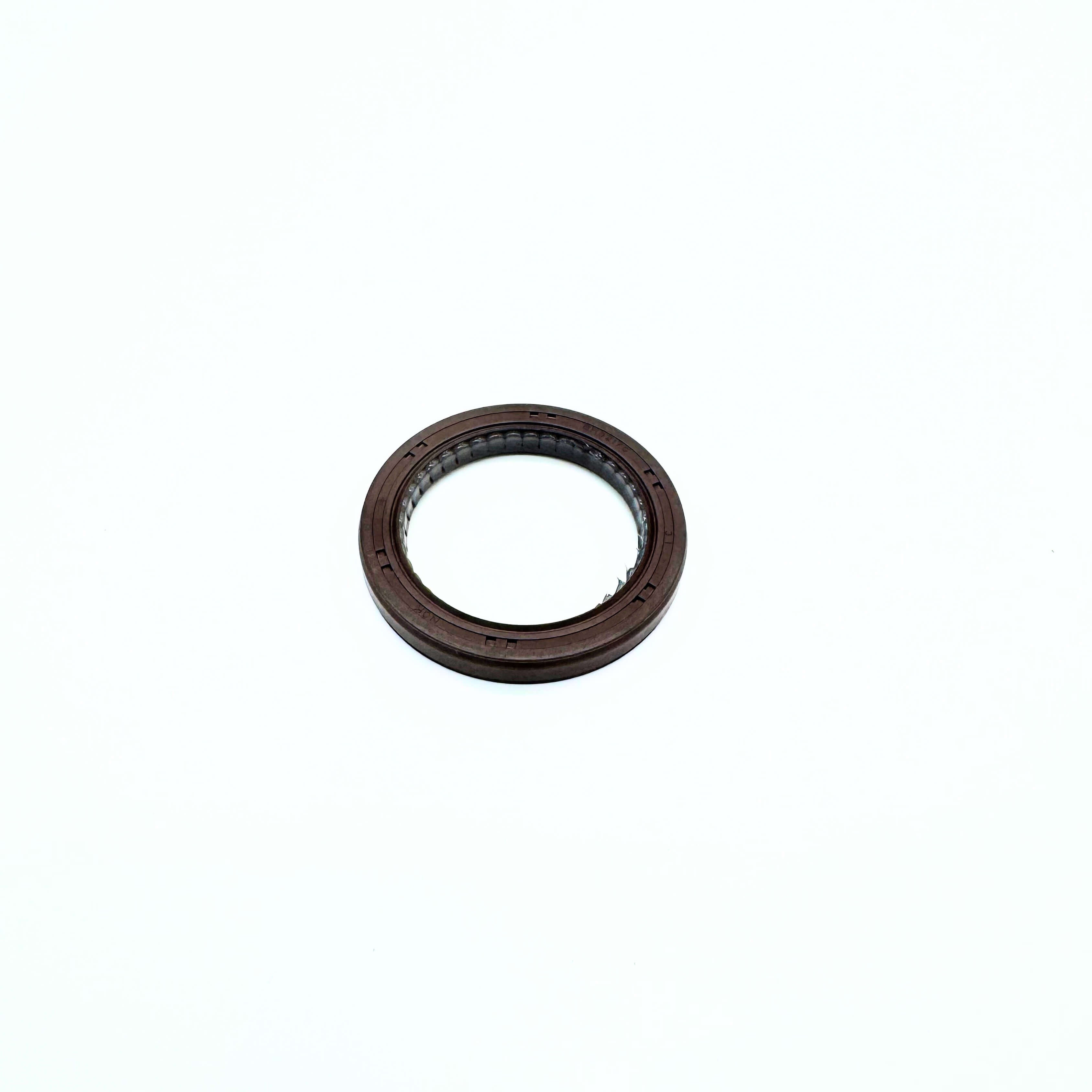Genesis of Kei Trucks
Innovative Midship Layout Blueprint for Suzuki Every
Suzuki Carry Mini Truck: A Comprehensive Guide
Suzuki’s Carry has been a staple of the Japanese kei truck market since its debut in 1961. The model’s versatility, fuel efficiency, compact size, and maximum payload have made it suitable for a wide range of applications across agriculture and commerce verticals. Drivers considering and wanting to learn more about Suzuki’s Carry may not know where to start, with there being 11 generations since its release—and that’s where we come in.
We’re here to streamline your understanding of the Suzuki Carry’s legacy with a walkthrough highlighting each generation’s history, distinct attributes, and chassis codes—helping you make a more informed buying decision. Whether you’re looking for a classic model or something new, the Suzuki Carry has something for everyone eyeing a kei purchase.
The Evolution of Suzuki Carry: A Journey Through Generations
Different generations of Suzuki’s Carry have introduced changes reflecting current market needs, from compact pickup designs to more contemporary cab-over configurations. Some of the most sought-after Carrys are “bug-eyed” models with rounded headlights, introduced in 1972. Suzuki began turning away from the Carry’s rounded headlight design during the 1990s, and additional evolutions have included the automaker marketing this model under various names in different countries, such as the Suzuki Every and Suzuki Super Carry. Take a closer look at what distinguishes each Carry generation with our breakdown below.
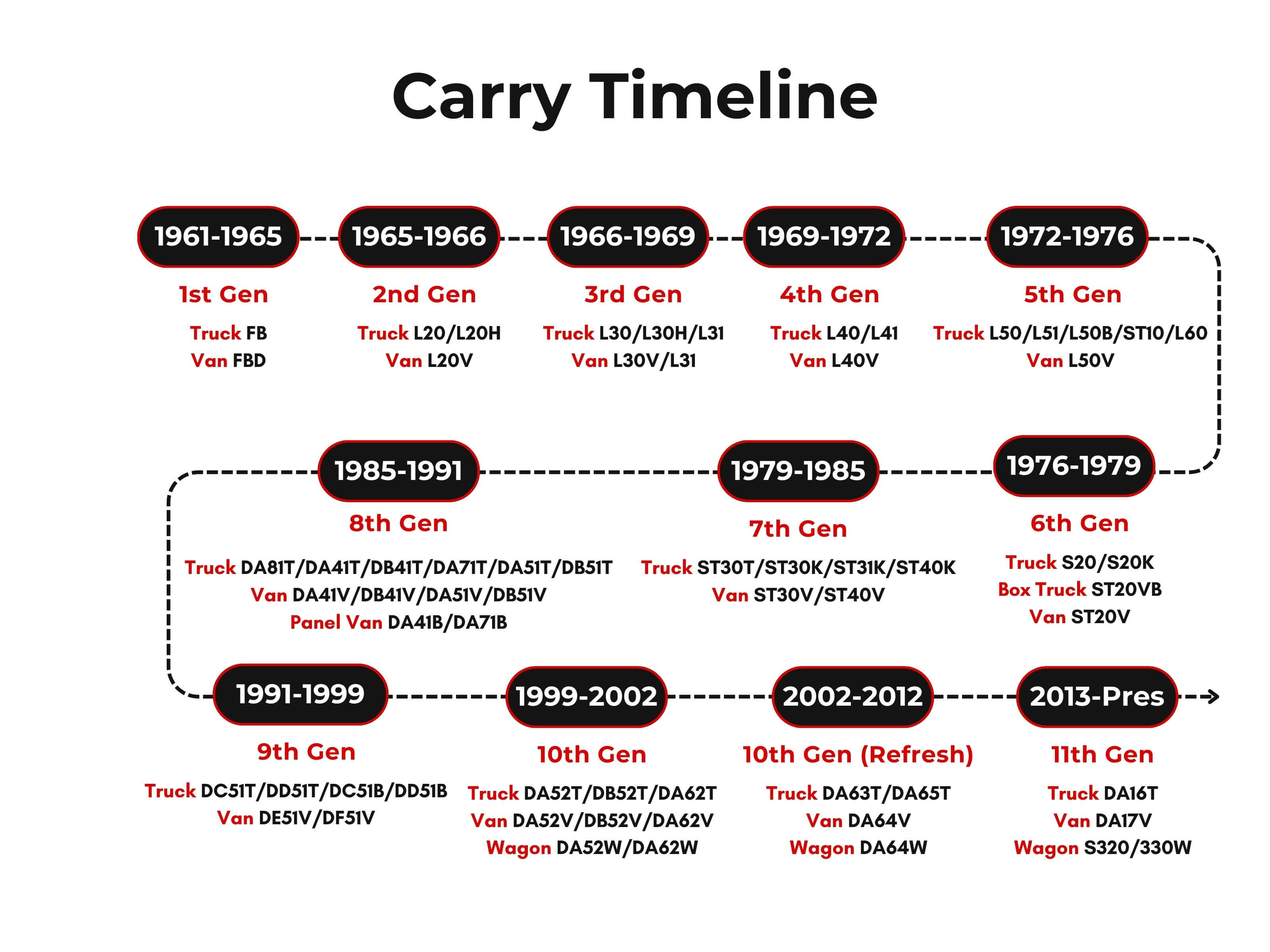
1961-1965: The Dawn of the Suzulight Carry
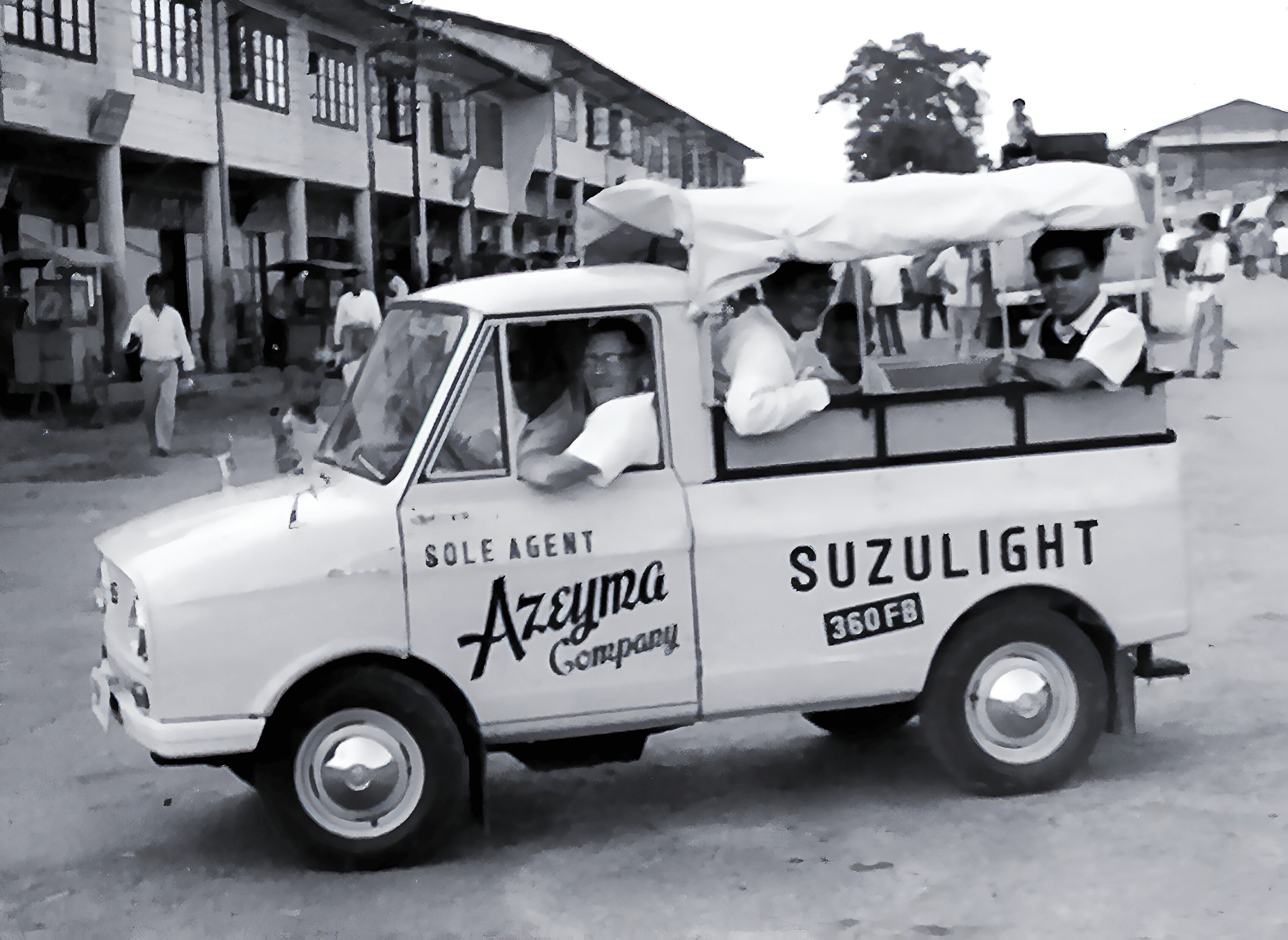
KEY HIGHLIGHTS
SIZE SPECIFICATIONS
Body Height: 61.02 inches
Body Length: 117.72 inches
Body Width: 50.98 inches
Truck Bed Height: 17.72 inches
Truck Bed Width: 53.74 inches
Truck Bed Height 43.31 inches
TECHNICAL BREAKDOWN
Engine: 359cc 2-Cylinder, 2-Stroke, Air-cooled
Horsepower: 21 hp
Cargo Capacity: 771 lbs [Truck]
Top Speed: 47.2 Mph
TOTAL WEIGHT
1080.26 lbs
Suzuki’s first-generation Carry, designated the Suzulight Carry FB, featured a midship layout, meaning that the engine sat under the driver’s seat near the middle of the vehicle. While the Suzulight Carry mirrored the design of a cab-over truck, its small hood was similar to front-engined trucks, a layout known as a semi-cabover. In addition to maximizing cargo space, the short hood made the vehicle feel more accessible to drivers used to front-engine models. Debut Carrys contained a two-cylinder two-stroke air-cooled engine delivering 21 horsepower. Drivers also received a 771-lb cargo bed payload. The debut Carry truck was 117.7 inches long, 51 inches wide, and 61 inches high, with a 72.8-inch (185 cm) wheelbase.
In 1964, Suzuki released the glassed FBD Van based on the truck in 1964. This glassed FBD Carry Van kei van featured three doors, a four-passenger seating capacity, a 661-lb rear cargo capacity, and rigid front/rear suspension with leaf springs. This rigid leaf spring suspension, coupled with the model’s robust construction, helped establish the model’s reputation for durability. Suzuki carried over the first-generation Carry truck’s 21-horsepower two-cylinder engine into this van, producing a 47 mph top speed. The FBD would become the blueprint for Suzuki’s Every microvan model, introduced in 1982 and a subsequent staple of the kei van class.
Suzuki’s first-generation Carry competed with early kei trucks like Subaru’s Sambar, Honda’s Acty, Mitsubishi’s Minicab, and Daihatsu’s Hijet. Despite heavy competition right off the bat during its first generation, the Carry’s design made a large enough impact to spawn several badge-engineered variants and exports sold under brands like Ford, Bedford, Daewoo, and more. This widespread adaptation helped spread Suzuki’s influence throughout the world, along with the benefits of kei truck driving.
Unveiling the Chassis Codes: 1st Gen Carry Truck & Every Van
From 1961, Suzuki set the wheels in motion for a model that would play a significant role in shaping the kei truck revolution. Learn more about the Carry’s first-generation truck and van with its chassis codes below.
| Chassis Code | FB |
FBD |
| Drivetrain | RWD |
RWD |
| Powertrain | 359cc 2-Cyl, 2-Stroke, Air-Cooled |
359cc 2-Cyl, 2-Stroke, Air-Cooled |
| Vehicle Type | Truck |
Van |
1965-1966: The Suzulight Carry’s Brief Evolution – Second Generation L20
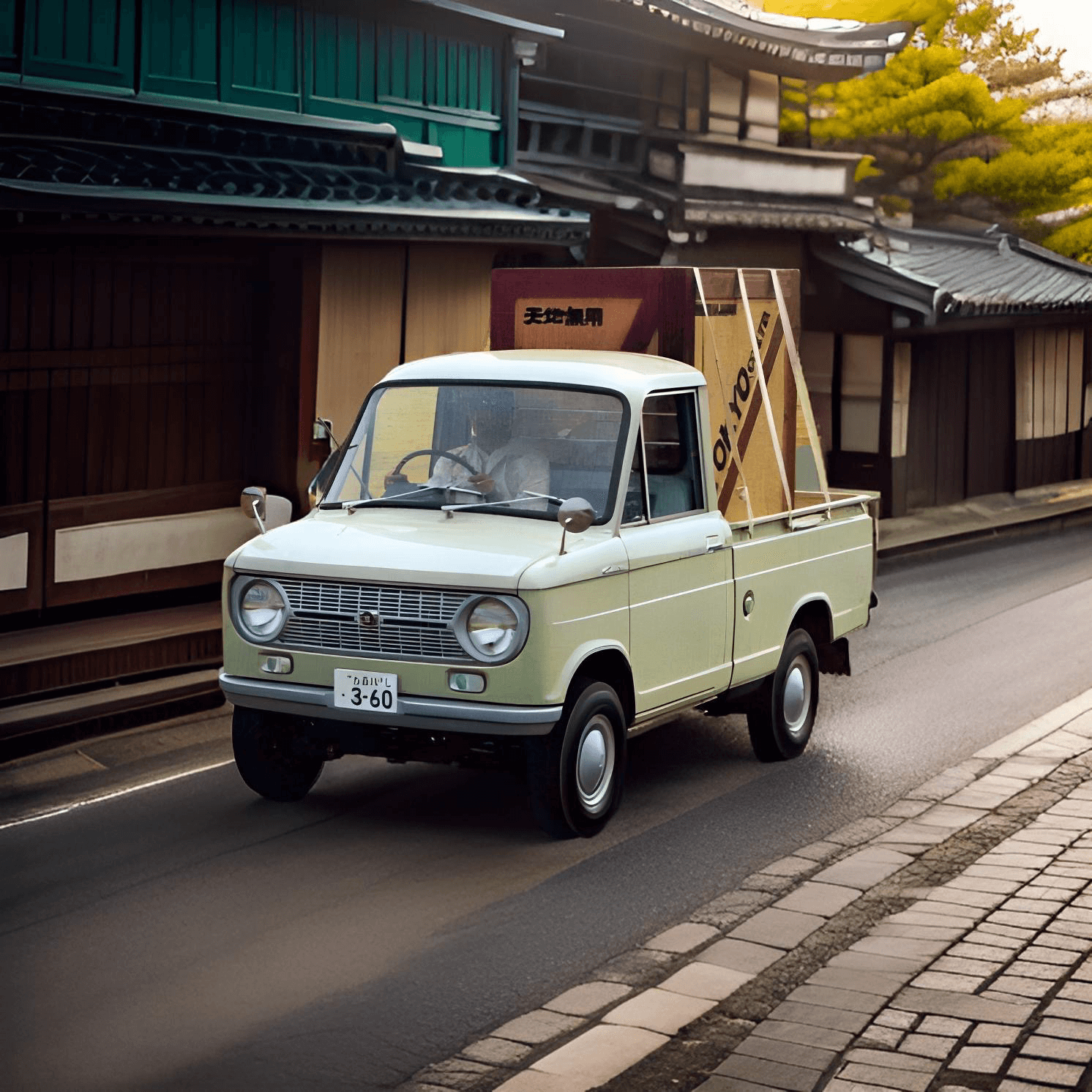
KEY HIGHLIGHTS
Refined Kei Truck Evolution
Expanded Cabin and Truck Bed
Enhanced Usability, Retained Core Engineering
SIZE SPECIFICATIONS
Body Height: 62.2 inches
Body Length: 123.6 inches
Body Width: 51.2 inches
Truck Bed Length: 70.9 inches
Truck Bed Width: 50.8 inches
Truck Bed Height: 13.4 inches
TECHNICAL BREAKDOWN
Engine: 359cc 2-Cylinder, 2-Stroke, Air-cooled
Horsepower: 21 hp
Cargo Capacity: 770 lbs [Truck]
Top Speed: 47 mph
TOTAL WEIGHT
1,146 lbs
Suzuki tweaked the first-generation Carry truck and van to release new models suiting a wide range of commercial and personal transport needs; the L20 (truck), the L20V (van), and the unique L20H (pickup), characterized by additional features and refreshed styling. The L20 contained more cabin space and truck space, while payload and engine power carried over from the prior generation. This generation’s engine was refined with Suzuki’s in-house Cylinder Crank Injection lubrication system, increasing reliability, efficiency, and user convenience.
The L20 also modified its ladder-frame chassis with front wheels independently sprung by torsion bars, improving ride comfort and handling, especially on rural roads for workers like farmers. This robust ladder-frame chassis also ensured the L20 could handle heavy loads on rough terrain. Suzuki didn’t make many changes to the four-passenger van except for adding a split rear door with a bottom and top hatch for easier loading/unloading and sliding rear windows, which optimized ventilation. The L20H pickup contained a canvas canopy and a rear-facing seat in the bed.
Regarding styling, the L20 lineup featured more modern, squared-off exteriors, whereas first-generation designs emphasized rounded lines. While the second-generation Carry’s run was limited, it helped Suzuki implement refinements that set the stage for the third-generation’s full cabover layout. The L20 retained its “Suzulight” branding and continued being sold by its manufacturer alongside third-generation models until 1969.
Behind the Numbers: L20 Carry Chassis
The second-generation Carry rolled off the assembly line with the following chassis codes representing its distinct trim levels.
| Chassis Code | L20 |
L20H |
L20V |
| Drivetrain | RWD |
RWD |
RWD |
| Powertrain | 359cc 2-Cyl, 2-Stroke, Air-Cooled |
359cc 2-Cyl, 2-Stroke, Air-Cooled |
359cc 2-Cyl, 2-Stroke, Air-Cooled |
| Vehicle Type | Truck |
Truck (With bed seats) |
Van |
1966-1969: The Third Generation Suzuki Carry – Redefining the Kei Truck
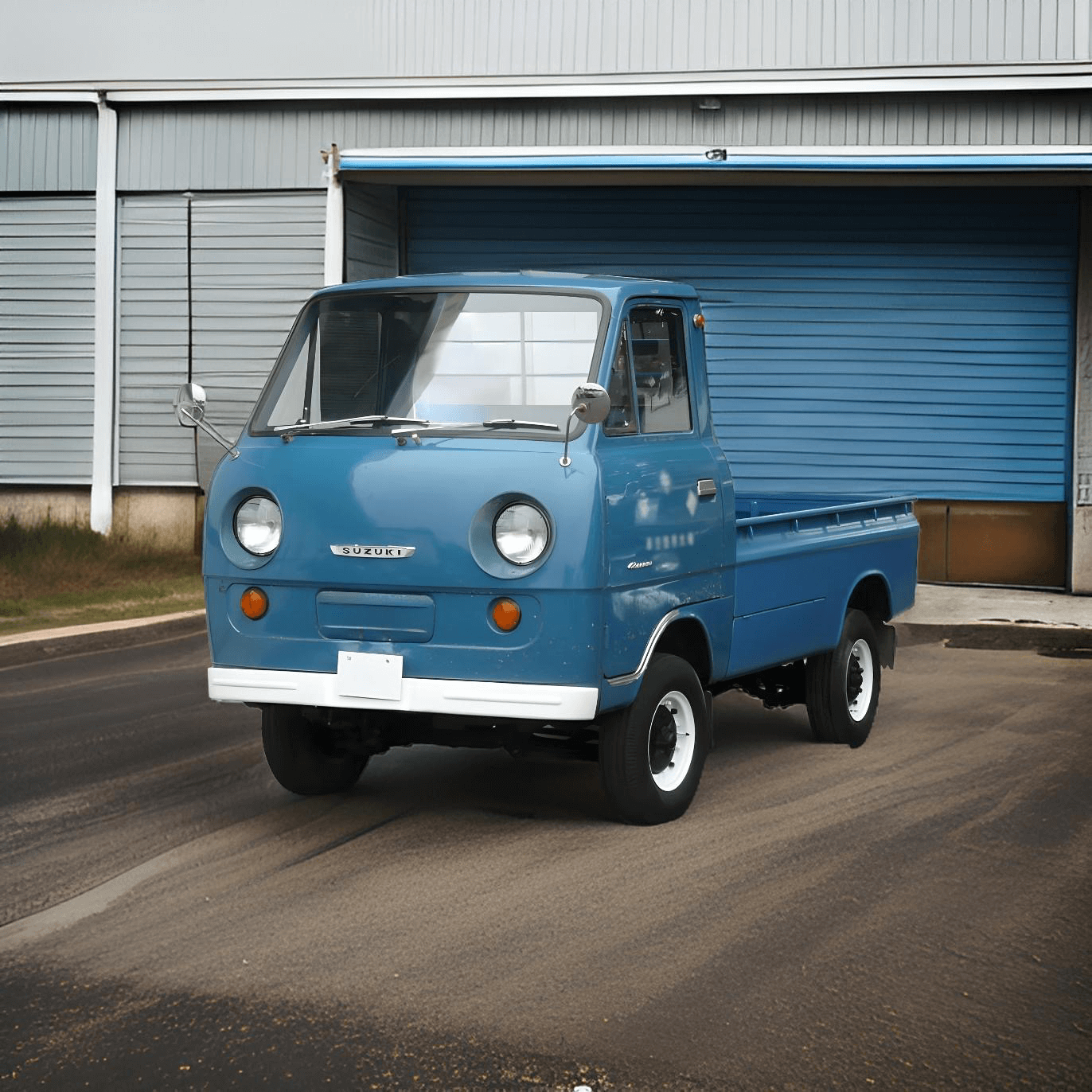
KEY HIGHLIGHTS
- Cabover Design Introduced
- Triple Tailgate Innovation
- Suzuki Drops Suzulight Name
SIZE SPECIFICATIONS : TRUCK L31
- Body Height: 63.58 inches
- Body Length: 117.72 inches
- Body Width: 50.79 inches
- Truck Bed Height: 11.42 inches
- Truck Bed Width: 47.2 inches
- Truck Bed Length 47.8 inches
TECHINICAL BREAKDOWN
- Engine: 359cc 2-Cylinder, 2-Stroke, Air-cooled
- Horsepower: 21 hp
- Torque: 22.42 lb-ft
- Truck Cargo Capacity: 771 lbs Van Cargo Capacity: 661 lb
- Top Speed: 47 Mph
The third-generation L30 Suzuki Carry’s redesign included the installation of a trend-setting flat front panel, a full cab-over configuration, and ditching of the Suzulight brand name in favor of Suzuki. While specs and dimensions mirrored the previous generation with elements like a frame and canopy over the truck bed and Subaru’s horizontally-mounted FB engine with 21 horsepower, L30H models received inward-facing bed-mounted seats without safety belts. The third-generation Carry also included the L31, which premiered a triple tailgate bed accessible on any side that was also 15 inches longer than its predecessor. Peak load capacity remained at 770 lbs, but the load area was significantly greater in this dropside bed variant.
One of the most distinguishing elements of the third-generation Carry was Suzuki's combining and mounting the starter and generator directly on the driveshaft. This advent saved space in the engine department, reduced overall weight, and simplified maintenance. In 1968, Suzuki introduced a Carry van version of the L30, the L30V, which contained four doors and a two-piece top and bottom tailgate.
Decoding the Third-Generation Carry: Truck and Van Chassis Insights
From 1966 to 1969, the Suzuki Carry was defined by these unique chassis codes.
| Chassis Code | L30 |
L30H |
L30H |
L30V |
| Drivetrain | RWD |
RWD |
RWD |
RWD |
| Powertrain | 359cc 2-Cyl, 2-Stroke, Air-Cooled |
359cc 2-Cyl, 2-Stroke, Air-Cooled |
359cc 2-Cyl, 2-Stroke, Air-Cooled |
359cc 2-Cyl, 2-Stroke, Air-Cooled |
| Vehicle Type | Truck |
Truck (With bed seats) |
Truck (With bed seats) |
Van |
1969-1972: The Fourth Generation Suzuki Carry – Italian Flair Meets Japanese Utility
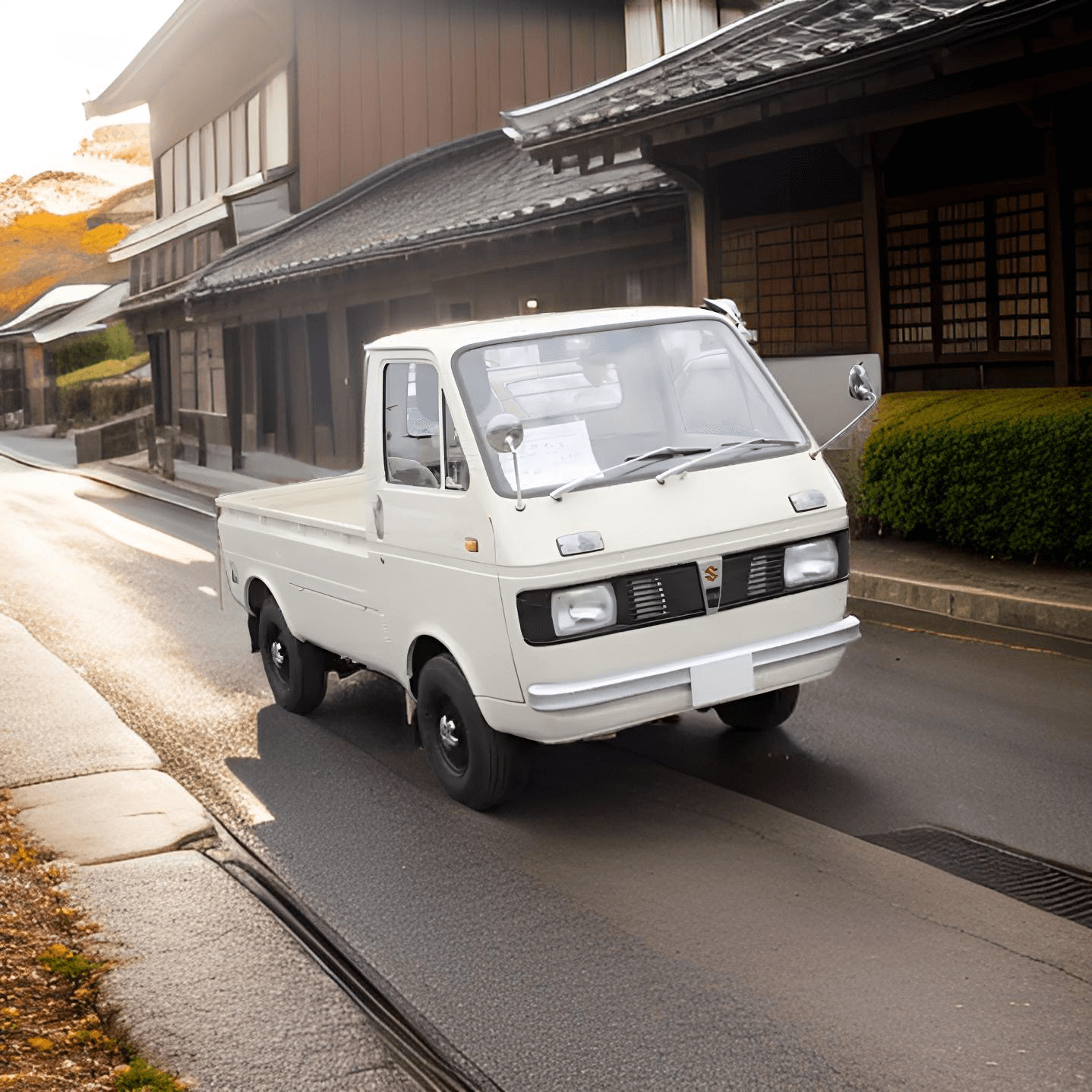
KEY HIGHLIGHTS
- Giugiaro's Bold Design
- Flat Front, Cabover Style
- Upgraded 27 Ps Engine
- Triple-Tailgate Cargo Access
- Super Deluxe Wood Grain Trim
- Versatile Camper Van Option
SIZE SPECIFICATIONS : TRUCK
- Body Height: 62.01 inches
- Body Length: 117.91 inches
- Body Width: 51.00 inches
- Truck Bed Height: 11.42 inches
SIZE SPECIFICATIONS : VAN
Cargo Area: 309 cubic feet
Body Height: 62.01 inches
Body Length: 117.72 inches
Body Width: 51.00 inches
TECHINICAL BREAKDOWN
- Engine: 359cc 2-Cylinder, 2-Stroke, Air-cooled
- Horsepower: 26.6 hp
- Torque: 24.6lb-ft
- Truck Cargo Capacity: 771 lbs / Van Cargo Capacity: 661 lb
- Top Speed: 59 Mph
Italian design influence helped differentiate the fourth-generation Suzuki Carry from its predecessors. Suzuki hired Giorgetto Giugiaro’s firm, Italdesign, to revamp the Carry. While Giugiaro is known for designing vehicles like Volkswagen’s Golf, BMW’s M1, and Lotus Esprit, he worked on other Japanese cars in addition to the Carry, such as the Isuzu 117 Coupe and the Subaru SVX. However, Italdesign was newly created when Subaru contracted it. Designated the L40, early fourth-generation Carrys, available in van and truck models, contained the previous generation’s rear-wheel drive (RWD) configuration and 359cc 2-stroke 2-cylinder engine producing about 25 horsepower, but this power output received a slight boost to almost 27 horsepower in 1971. While the horsepower increase was slim and maximum load dropped 110 lbs to 660 lbs, the top speed surpassed 62 mph for the first time in the model’s history.
Suzuki’s fourth-generation Carry van contained four doors, a slanted, one-piece rear hatch, and a small table between the front and rear seats, emphasizing its practicality. Still, competing vans without the Carry’s rear hatch won over more customers with better cargo space. Suzuki responded by marketing a camping edition of the Carry in 1971 with features like window curtains, mosquito nets, and a roll-up bed mat. Giugiaro’s work was more noticeable with the Carry van’s symmetrical looks. Fourth-generation Carry trucks came with the previous generation’s single- or triple-gate beds, but their length extended to six feet. Suzuki also sold a Super Deluxe fourth-generation Carry characterized by black exterior trim above the headlights, under the blinkers, and along the doors. The cabin featured cushier seats, a radio, and a cigarette lighter.
Unlocking the Chassis Codes: The Fourth-Generation Carry Truck and Van
Between 1969 and 1972, Suzuki redefined the Carry’s image with Giorgetto Giugiaro’s design prowess, more focused marketing of its van, and richer interiors. Each model rolled off factory lines with the following chassis codes.
| Chassis Code | L40 |
L41 |
L40V |
| Drivetrain | RWD |
RWD |
RWD |
| Powertrain | 359cc 2-Cyl, 2-Stroke, Air-Cooled |
359cc 2-Cyl, 2-Stroke, Air-Cooled |
359cc 2-Cyl, 2-Stroke, Air-Cooled |
| Vehicle Type | Truck (With single tailgate) |
Truck (With triple tailgates) |
Van |
1972-1976: The Fifth Generation Suzuki Carry – Evolution Meets Practicality
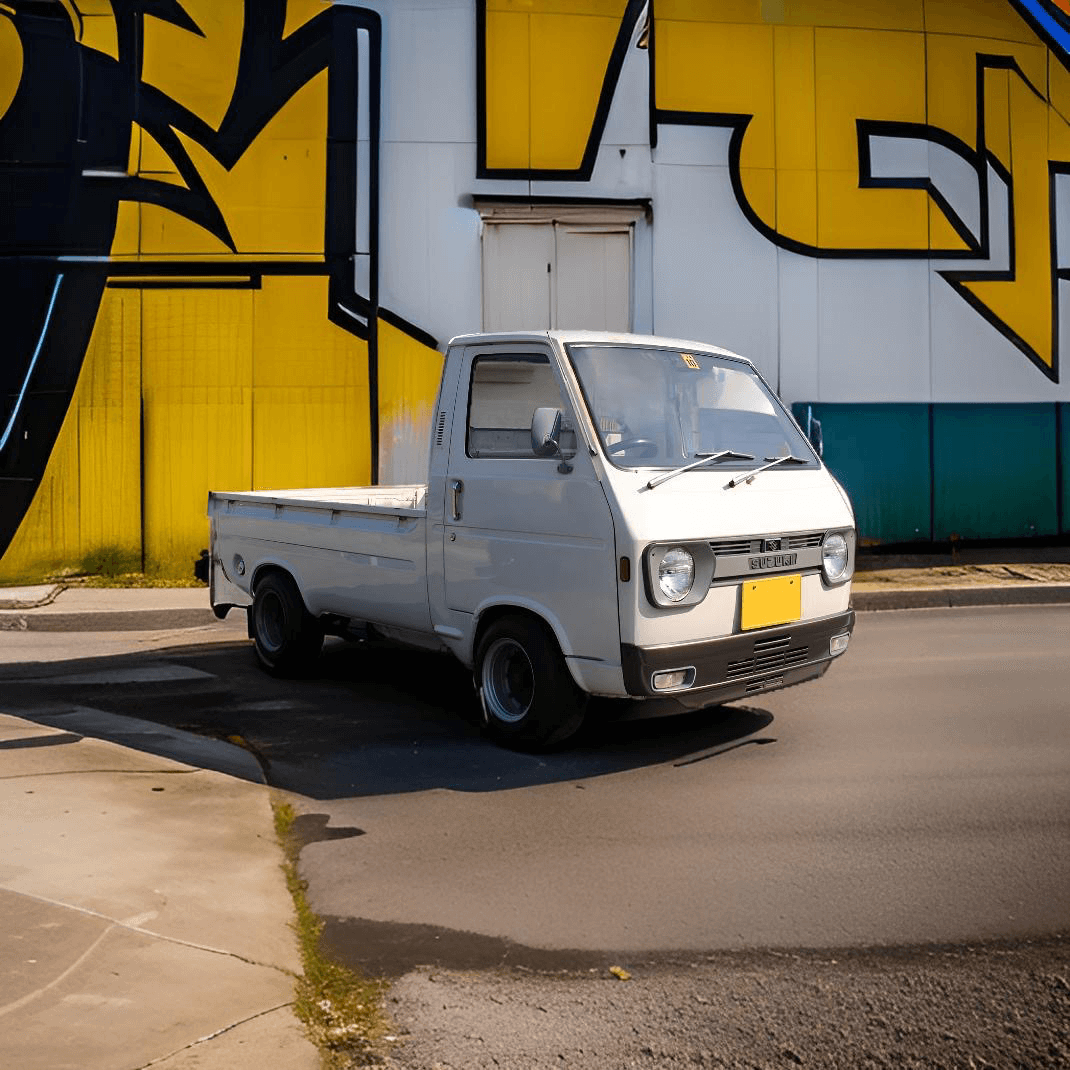
KEY HIGHLIGHTS
- Water-Cooled Engine Introduced
- Floor-Mounted Shifter
- Dual Sliding Doors Enhanced
- Export Models with Bigger Engines
- Refrigerated Commercial Variants Available
- 550cc Engine in DA71T/DA81T (JDM)
SIZE SPECIFICATIONS : TRUCK
- Body Height: 62.99 inches
- Body Length: 117.91 inches
- Body Width: 50.98 inches
- Truck Bed Height: 11.42 inches
- Truck Bed Length: 73.34 inches
- Truck Bed Width: 47.64 inches
SIZE SPECIFICATIONS : VAN
- Body Height: 62.99 inches
- Body Length: 117.91 inches
- Body Width: 50.98 inches
TECHINCAL BREAKDOWN
- Engine: LJ50 359cc 3-Cylinder, 2-Stroke
- Water-Cooled
- Horsepower: 28hp
- Torque: 27.5lb-ft
- Load Capacity: 770 lbs
The fifth-generation L50 Carry carried remnants of Giugiaro’s design, but ditched front door ventilation windows and rounded headlights. Suzuki also implemented a more square rear body with a sliding rear door. Horsepower from the new water-cooled 3-cylinder engine, a first for the Carry truck and van, increased slightly to 28, and the van’s maximum load capacity returned to 770 lbs from 660 lbs. A five-door van with sliding doors followed in late 1972, and in early 1973, Suzuki released its dropside L51 Carry with a new grille and front bumper.
Riding a wave of sales success with its Carry from 1973 to 1974, Suzuki released an export version of the model’s truck, with loading ability as the central selling point. The subsequent L60 series gained a 446cc engine with 29 horsepower, three more than its export counterpart, and a greater load capacity of 1,200 lbs. However, stricter emissions regulations led to the domestic Carry’s horsepower dropping to 26. One of the fifth-generation Carry’s most notable changes was Suzuki moving the shifter from the steering column to the floor, which carries over into the model’s modern lineup.
Decoding the Fifth Generation: Carry Truck and Van Chassis Secrets
Suzuki had some ups and downs with its fourth-generation Carry’s sales, but its fifth-generation bounced back with fervor under the chassis codes and trim levels below.
| Chassis Code | L50 |
L51 |
L50B |
L50V |
ST10 |
| Drivetrain | RWD |
RWD |
RWD |
RWD |
RWD |
| Powertrain | 359cc 2-Cyl, 2-Stroke, water-cooled |
359cc 2-Cyl, 2-Stroke, water-cooled |
359cc 2-Cyl, 2-Stroke, water-cooled |
359cc 2-Cyl, 2-Stroke, water-cooled |
539cc 3-Cylinder, 2-Stroke, water-cooled |
| Vehicle Type | Truck (With single tailgate) |
Truck (With triple tailgates) |
Box Truck |
Van |
Truck |
1976-1979: The Suzuki Carry Grows Up in the Sixth Generation
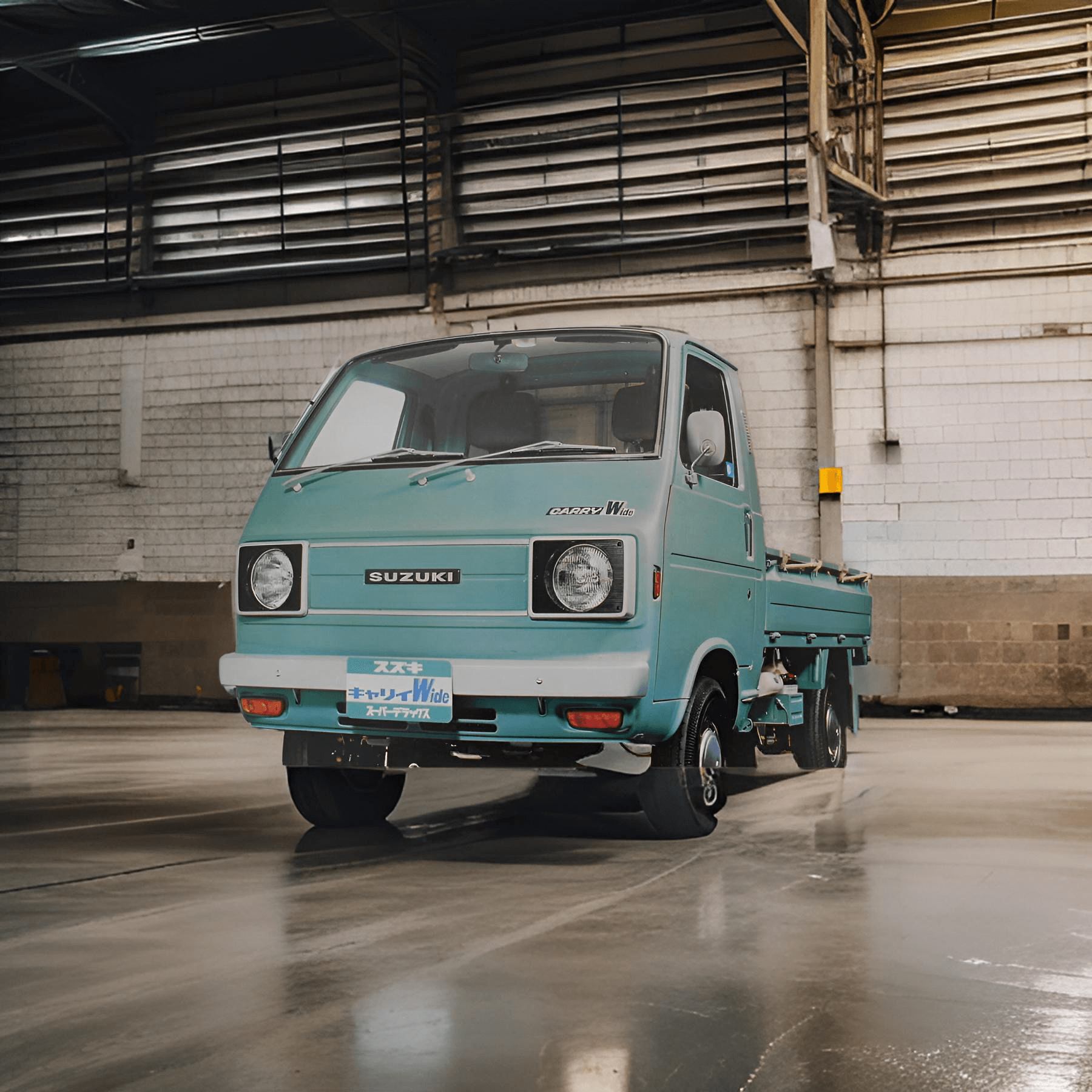
KEY HIGHLIGHTS
- Carry Wide Dimensions Expanded
- Reinforced Chassis For Stability
- Super Deluxe Trim Added
- Factory Fitted Dump Bed
- Three Drop-Sides for Flexibility
- Indonesian Turungtung Phenomenon
- ST20 Facelift and Grille
- Global Success and Adaptability
SIZE SPECIFICATIONS: TRUCK/VAN
- Body Height: 63.98 inches
- Body Length: 125.79 inches
- Body Width: 54.92 inches
- Truck Bed Height: 10.24 inches
- Truck Bed Length: 76.38 inches
- Truck Bed Width 51.77 inches
TECHNICAL BREAKDOWN
- Engine: 539cc 3-Cylinder, 2-Stroke
- Water-cooled
- Horsepower: 25.7
- Torque: 38.3lb-ft
- Cargo Capacity: 770 lbs
New kei regulations allowed the Carry to adopt larger dimensions for the sixth-generation ST10, leading to the Carry Wide model that was 3.9 inches wider and about an inch longer. The ST20K truck had three drop sides, while the utility version contained a tailgate and formed sides. Suzuki offered single and triple-tailgate beds. Single tailgate beds could be fitted with an FRP bed lining or wood liner for more durability, while both versions were available with canvas covers. Drivers were also able to get a factory-fitted dump bed on the Carry for the first time.
The engine was a three-cylinder 539cc water-cooled two-stroke, helping form the 772-lb payload. Sixth-generation Carry length extensions helped increase cabin and bed sizes. The ST20V van mirrored the previous generation, but the front end now included a faux grille and round headlights. Van dimensions wouldn’t increase during this generation until 1977. Higher truck and van trim levels offered higher quality materials for seats and door panels, locking front side doors, and chrome exterior accents.
6th Generation Carry Truck and Every Van Chassis Codes
Between 1976 and 1979, Suzuki took advantage of shifting kei regulations to transform the Carry truck and van into larger, more versatile products. Get the full rundown of this pivotal generation with its chassis codes.
| Chassis Code | ST20 |
ST20K |
ST20VB |
ST20V |
| Drivetrain | 2WD |
2WD |
2WD |
2WD |
| Powertrain | 539cc 3-Cylinder, 2-Stroke, water-cooled |
539cc 3-Cylinder, 2-Stroke, water-cooled |
539cc 3-Cylinder, 2-Stroke, water-cooled |
539cc 3-Cylinder, 2-Stroke, water-cooled |
| Vehicle Type | Truck (With single tailgate) |
Truck (With triple tailgates) |
Box truck (Dry and refrigerated) |
Van |
1979-1985: Seventh Generation Suzuki Carry – Built for the Job
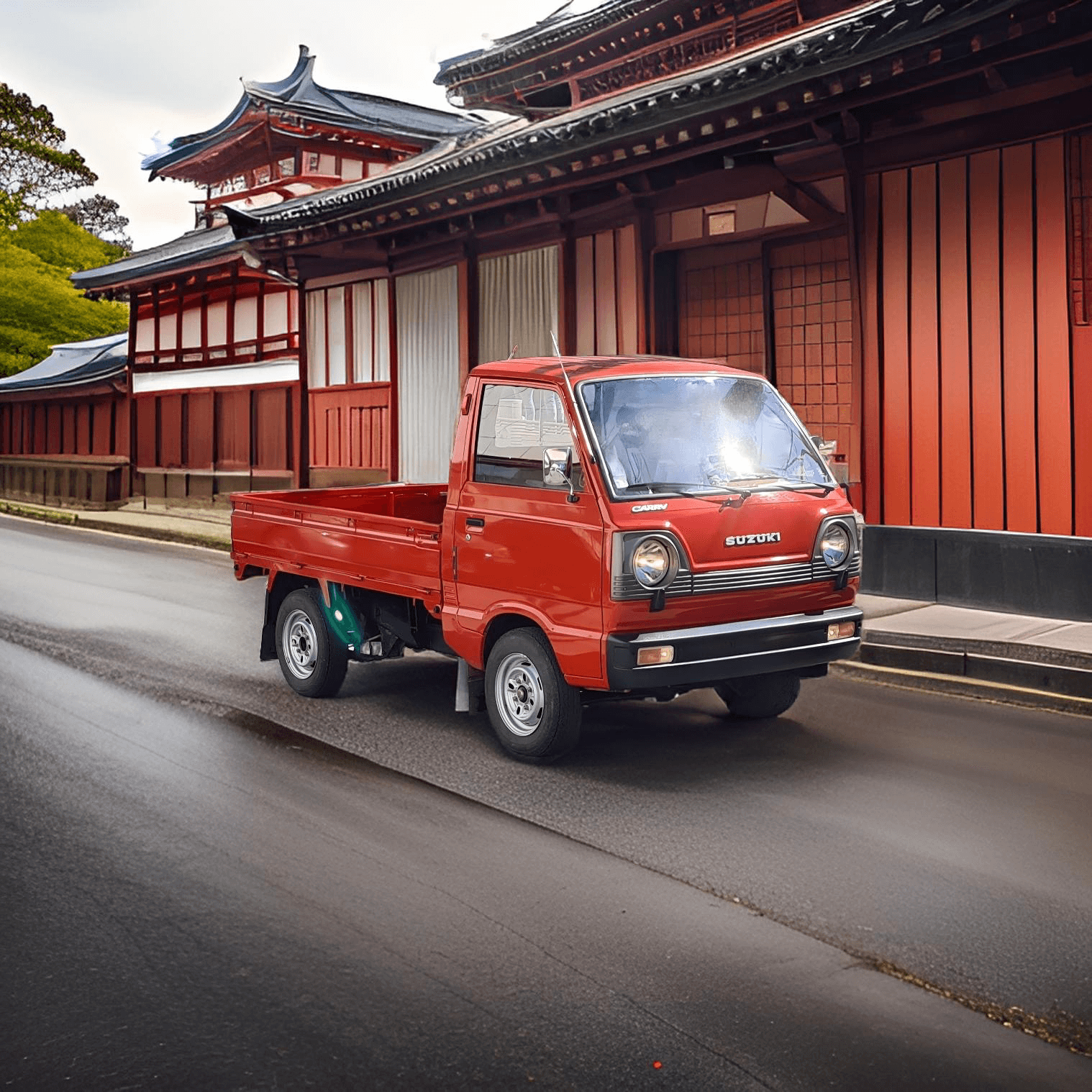
KEY HIGHLIGHTS
- 4WD Introduction
- Engine Upgrade Options
- High Roof Variant
- Limited Slip Differential
- Global Market Reach
- Two-Stroke Classic
- Four-Stroke Evolution
- The two-stroke engine was phased out during the seventh generation, with the four-stroke engine becoming standard later
SIZE SPECIFICATIONS (Truck)
- Body Height: 63.98 inches
- Body Length: 125.39 inches
- Body Width: 54.92 inches
SIZE SPECIFICATIONS (Van)
- Body Height (High Roof): 72.64 inches
- Body Height (Standard): 63.98 inches
- Body Length: 125.79 inches
- Body Width: 54.92 inches
TECHNICAL BREAKDOWN
Engine: 539cc 3-Cylinder, 4-Stroke, Water-Cooled, Carbureted
Horsepower: 28
Torque: 30lb-ft
Load Capacity: 772lbs
The seventh-generation Carry began with the ST30, which moved the previous generation’s two-stroke engine underneath the front seat. Suzuki’s export version of the ST30, the ST90, contained a larger 797cc four-stroke F8A engine, and 1980 led to the domestic release of a new 543cc four-stroke F5A engine within the ST40. In 1981, the Carry received four-wheel drive (4WD) in its pickup for the first time, which drivers could fit to the two-stroke or four-stroke engines. A limited slip differential complemented the 4WD Carry trucks’ off-road capability with additional traction.
A year later, in 1982, Suzuki began marketing the Carry van under the name “Every.” The Every was offered a high roof model with a panoramic rear sunroof, a novelty for kei cars of the time that increased cabin space. While 4WD wasn’t available in the Every van, buyers could choose between a two-stroke or four-stroke engine.
Chassis Code Guide: 7th Gen Carry Truck & Every Van
Suzuki’s Carry underwent some noteworthy changes from 1979 to 1985, and it’s easier to keep track of these evolutions with its chassis codes below.
| Chassis Code | ST30T |
ST30K |
ST30V |
ST31K |
ST40K |
ST40V |
| Drivetrain | 2WD |
2WD |
2WD |
2WD/4WD |
2WD/4WD |
2WD |
| Powertrain | 539cc 3-Cyl, |
539cc 3-Cyl, |
539cc 3-Cyl, |
539cc 3-Cyl, |
543cc 3-Cyl, 4-Stroke, water-cooled |
543cc 3-Cyl, 4-Stroke, water-cooled |
| Trim Levels | STD |
STD |
STD |
A Type |
A Type |
A Type |
| Vehicle Type | Single Tailgate Truck |
Triple Tailgate Truck |
Van |
Triple Tailgate Truck |
Triple Tailgate Truck |
Van |
1985-1991: The Eighth Generation Suzuki Carry/Every Takes Shape
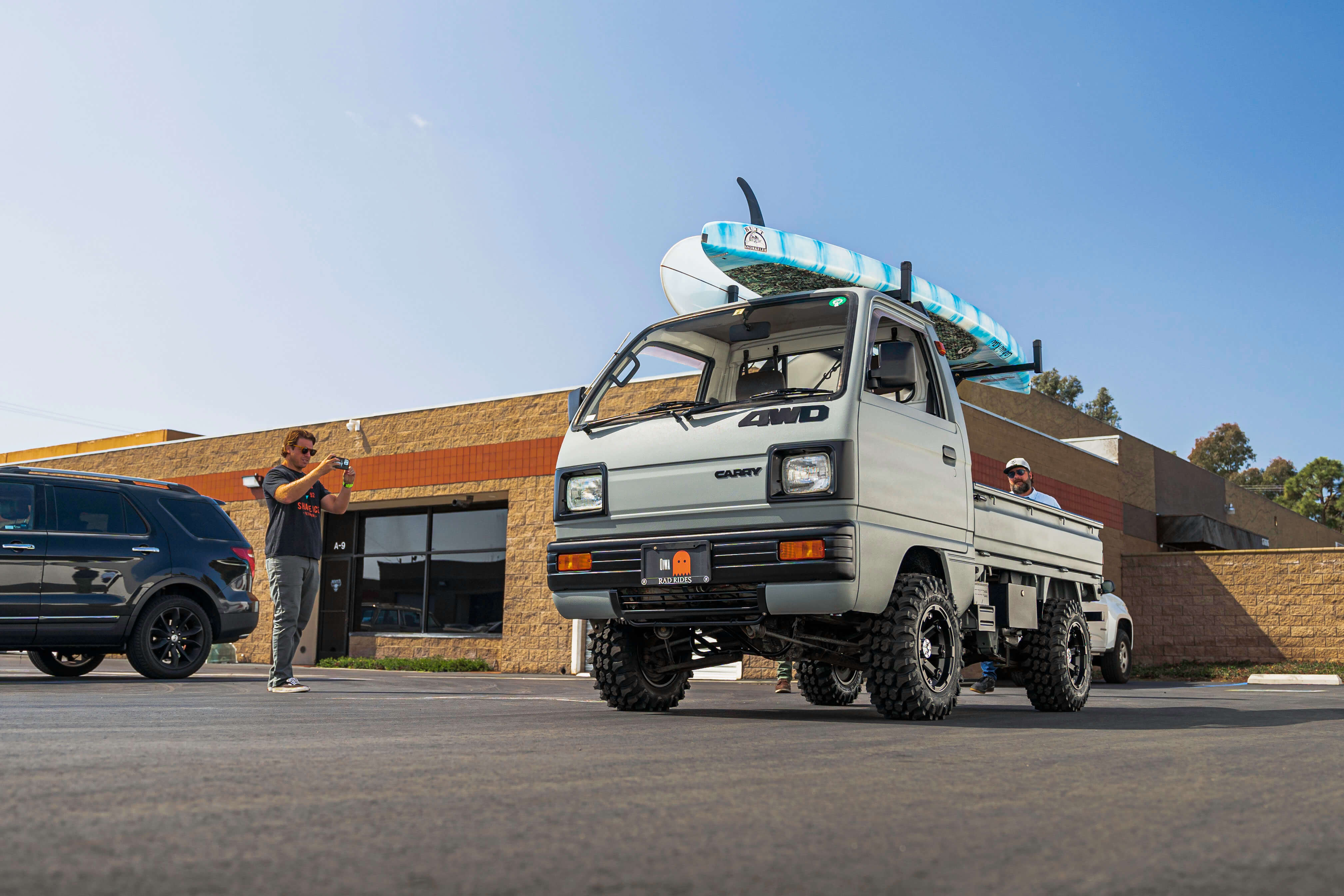
KEY HIGHLIGHTS
Forced Induction Engines
Extra Low Crawler Gears
Hi/Lo 4WD Transfer Case
Dual Sliding Sunroofs (Van)
Panoramic Sunroofs (Van)
Aero Kits (Van)
SIZE SPECIFICATIONS (Truck)
- Body Height: 69.88 inches
- Body Length: 125.79 inches
- Body Width: 54.92 inches
SIZE SPECIFICATIONS (Van)
- Body Height (High Roof): 75.59 inches
- Body Height (Standard): 69.29 inches
- Body Length: 125.79 inches
- Body Width: 54.92 inches
TECHNICAL BREAKDOWN
- Engine: 547cc 3-Cylinder, 4-Stroke, Water-Cooled, Carbureted
- Horsepower(NA): 35
- Horsepower(SC): 47.3
- Torque: 32.6 lb-ft
- Load Capacity: 772lbs
The eighth-generation Carry’s versatility manifested in the form of extensive drivetrain and feature configurations. A new supercharged 4-stroke engine was optional within the truck, and the Every van could come with a turbocharged 4-stroke starting in 1991. Trucks and vans could have either 4 or 5 speed manual transmissions, and all trucks offered standard part-time 4WD. Those wanting a hi/lo 4WD selector would need to opt for a truck’s 4-speed transmission, while 5-speed trucks boasted an extra-low crawler gear optimizing off-roading. Post-1985 Carrys in Europe had a 797cc four-cylinder engine, but Super Carrys featured a 970 cc four-cylinder engine with a 68 to 71 mph top speed and more robust bumpers increasing overall length by about four inches.
The Carry truck entered into the 1990s with an array of commercial setups including frozen or refrigerated box trucks, dump beds, and motorcycle carriers. Interiors were characterized by features like floor mats, patterned seat covers, a clock, and more. The eighth-generation Suzuki Carry introduced front disc brakes on truck and vans variants, and the Every van contained dual sliding sunroofs, a high-roof, and aero appearance packages with touches including but not limited to a roof spoiler and side skirts.
8th Gen Suzuki Carry & Every Van: The Chassis Code Rundown
Over its 1985 to 1991 run, the Suzuki Carry flexed the following range of chassis codes and trim packages.
| Chassis Code | DA81T |
DA41T |
DB41T |
DA41B |
DA41V |
DB41V |
DA71T |
| Drivetrain | 2WD |
2WD |
4WD |
2WD |
2WD |
4WD |
2WD |
| Power Train | 539cc 3-Cylinder, 2-Stroke, water-cooled |
547cc 3-Cylinder, 4-Stroke, water-cooled |
547cc 3-Cylinder, 4-Stroke, water-cooled |
547cc 3-Cylinder, 4-Stroke, water-cooled |
547cc 3-Cylinder, 4-Stroke, water-cooled |
547cc 3-Cylinder, 4-Stroke, water-cooled |
547cc 3-Cylinder, 4-Stroke, water-cooled |
| Trim Levels | A Type |
TA |
KA |
WB |
GA |
GA |
GB |
| Vehicle Type | Truck |
Truck |
Truck |
Panel Van |
Van |
Van |
Truck |
| Chassis Code | DA71V |
DA71B |
DA51T |
DB51T |
DA51V |
DB51V |
| Drivetrain | 2WD |
2WD |
2WD |
4WD |
2WD |
4WD |
| Powertrain | 547cc 3-Cylinder, 4-Stroke, water-cooled |
543cc 3-Cylinder, 4-Stroke, water-cooled |
657cc 3-Cylinder, 4-Stroke, Carbureted |
657cc 3-Cylinder, 4-Stroke, Carbureted |
657cc 3-Cylinder, 4-Stroke, Carbureted |
657cc 3-Cylinder, 4-Stroke, Carbureted |
| Trim Levels | GA |
N/A |
TU |
KU |
GB 2-Seater |
GA |
| Vehicle Type | Van |
Panel Van |
Truck |
Truck |
Van |
Van |
1991-1999: The Suzuki Carry/Every’s Golden Era of Versatility
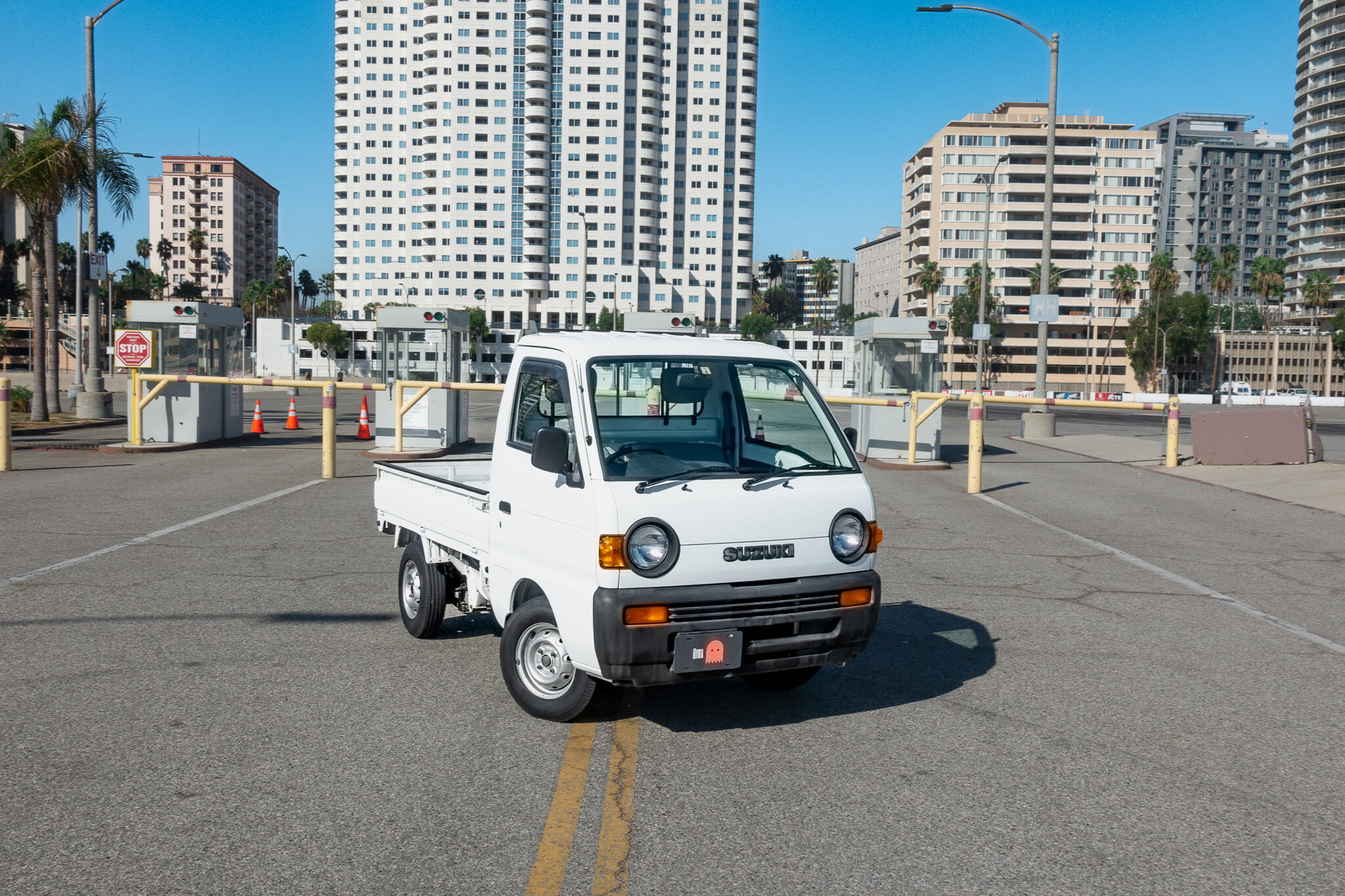
KEY HIGHLIGHTS
- F6A Engine
- Turbocharged Versions
- Electronic Fuel Injection
- Extended Wheelbase
- Front disc brakes standard from September 1993; earlier models had front drum brakes
- Nouhan Agriculture Spec
- Kintaro Dump Bed
- Power Windows (available on later/higher trim vans)
SIZE SPECIFICATIONS (Truck)
- Body Height: 69.88 inches
- Body Length: 129.72 inches (some exports longer)
- Body Width: 54.9–58.1 in (varies by year/market)
SIZE SPECIFICATIONS (Van)
- Body Height (High Roof): Up to 75.5 inches
- Body Height (Standard): 68.70 inches
- Body Length: 129.72 inches
- Body Width: 54.9–58.1 in (varies by year/market)
Engine (F6A Carbureted)
- Engine: 657cc 3-Cylinder, 4-Stroke, Water-Cooled
- Horsepower: 42 hp
- Torque: 42 lb-ft
- Load Capacity: 772 lbs
Engine (F6A Fuel Injected)
- Engine: 657cc 3-Cylinder, 4-Stroke, Water-Cooled
- Horsepower: 49 hp
- Torque: 43 lb-ft
- Load Capacity: 772 lbs
Engine (F6A Turbo)
- Engine: 657cc 3-Cylinder, 4-Stroke, Water-Cooled
- Horsepower: 60 hp
- Torque: 64 lb-ft
- Load Capacity: 772 lbs
Suzuki’s ninth-generation Carry truck and every van used an F6A 657cc 3-cylinder, water-cooled engine producing 41 horsepower. Meanwhile, electronic fuel injection and turbocharging on upper van trims delivered 49 and 63 horsepower, respectively. Power steering on higher-level van trims complemented this additional power, along with an increased width and length of 0.7 inches and a 0.5-inch longer wheelbase. All models were upgraded to standard front disc brakes by 1993, while the base truck and van models adopted round headlights, contrasting with the rectangular headlights of more expensive trims. Trucks came in 2WD and 4WD, and an electronically controlled factory dump-bed, the Kintaro Dump, added utility. While the ninth generation introduced the changes mentioned above, it also carried over several van elements from the previous generation, such as air conditioning on upper trims, multiple sunroofs, and high-roof grades. Suzuki began marketing all vans under the Every nameplate in 1993.
Importing a ninth-generation Carry truck or Every van is a popular choice since these models are exempt from Federal Motor Vehicle Safety Standards (FMVSS) due to their age. However, you’ll want to carry out some basic maintenance after importing to optimize your ownership experience.
These steps include but aren’t limited to:
- Timing belt and rubber component care
- Engine oil and filter changes
- Cooling system checks
- Brake system checks
Owners should also look into purchasing a factory service manual.
Under the Hood: The Secret Chassis Codes of the 9th Gen Carry & Every Van
Suzuki’s ninth generation Carry truck and Every van featured chassis codes DC for 2WD trucks, DD for 4WD, T for trucks, B for modified models, and V for vans.
| Chassis Code | DC51T |
DD51T |
DC51B |
DD51B |
DE51V |
DF51V |
| Drivetrain | 2WD |
4WD |
2WD |
4WD |
2WD |
4WD |
| Powertrain | 657cc 3-Cyl, |
657cc 3-Cyl, |
657cc 3-Cyl, |
657cc 3-Cyl, |
657cc 3-Cyl, |
657cc 3-Cyl, |
| Trim Levels | Classic |
KA |
WA |
WA |
Classic |
Classic |
| Vehicle Type | Truck |
Truck |
Truck |
Truck |
Van |
Van |
1999-2005: The Bold Tenth Generation of Suzuki Carry/Every Arrive
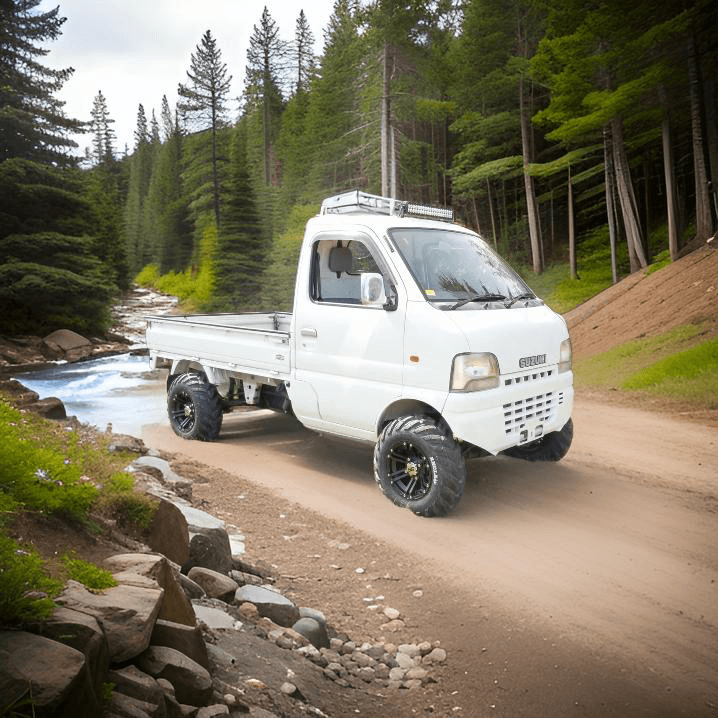
KEY HIGHLIGHTS
- F6A Engine
- Turbocharged Versions
- Electronic Fuel Injection
- Extended Wheelbase
- Front disc brakes standard from
- September 1993; earlier models had front drum brakes
- Nouhan Agriculture Spec
- Kintaro Dump Bed
- Power Windows (available on later/higher trim vans)
SIZE SPECIFICATIONS (Truck)
- Body Height: 69.88 inches
- Body Length: 129.72 inches (some exports longer)
- Body Width: 54.9–58.1 in (varies by year/market)
SIZE SPECIFICATIONS (VAN)
- Body Height (High Roof): Up to 75.5 inches
- Body Height (Standard): 68.70 inches
- Body Length: 129.72 inches
- Body Width: 54.9–58.1 in (varies by year/market)
TECHNICAL BREAKDOWN
Engine (F6A Carbureted)
657cc 3-Cylinder, 4-Stroke, Water-Cooled
Horsepower: 42 hpTorque: 42 lb-ft
Load Capacity: 772 lbs
Engine (F6A Fuel Injected)
657cc 3-Cylinder, 4-Stroke, Water-Cooled
Horsepower: 49 hp
Torque: 43 lb-ft
Load Capacity: 772 lbs
Engine (F6A Turbo)
657cc 3-Cylinder, 4-Stroke, Water-Cooled
Horsepower: 60 hp
Torque: 64 lb-ft
Load Capacity: 772 lbs
The 10th-generation Carry featured a more contemporary version of the previous generation’s F6A engine. In 1999, Suzuki introduced the 2WD Every Wagon, along with the larger Every Plus, which proved to be a popular export in the United Kingdom and Australia. The Every Plus could seat seven passengers, and it contained a more robust 1.3-liter G13 engine. Suzuki changed the Every Plus’ name to Every Landy in 2001, and it distinguished this version with a new, large chrome grille. The automaker also equipped this generation with a more powerful timing chain the same year. Drivers could equip the Carry truck with constant 4WD, and the wagon Every found success beyond Japan in markets like Chile and Malaysia.
Chassis Codes of the 10th Gen Carry Truck & Every Van
Manufactured between 1999 and 2005, the Suzuki Carry came stamped with the following chassis codes.
| Chassis Code | DA52T |
DB52T |
DA62T |
DA52V |
| Drivetrain | 2WD |
4WD |
2WD/4WD |
2WD |
| Powertrain | 657cc 3-Cyl, |
657cc 3-Cyl, |
658cc 3-Cyl, |
657cc 3-Cyl, |
| Trim Levels | Turbo |
Turbo Nouohan |
LE |
21st Century Special EX-II |
| Vehicle Type | Truck |
Truck |
Truck |
Van |
| Chassis Code | DA52W |
DB52V |
DA62V |
DA62W |
| Drivetrain | 2WD/4WD |
4WD |
2WD/4WD |
2WD/4WD |
| Powertrain | 657cc 3-Cyl, |
657cc 3-Cyl, |
658cc 3-Cyl, |
658cc 3-Cyl, |
| Trim Levels | 21st Century Special EX-II |
GA |
GA |
Joypop |
| Vehicle Type | Wagon |
Van |
Van |
Wagon |
2002-2012: The Decade Suzuki’s Carry and Every Got Their Glow-Up
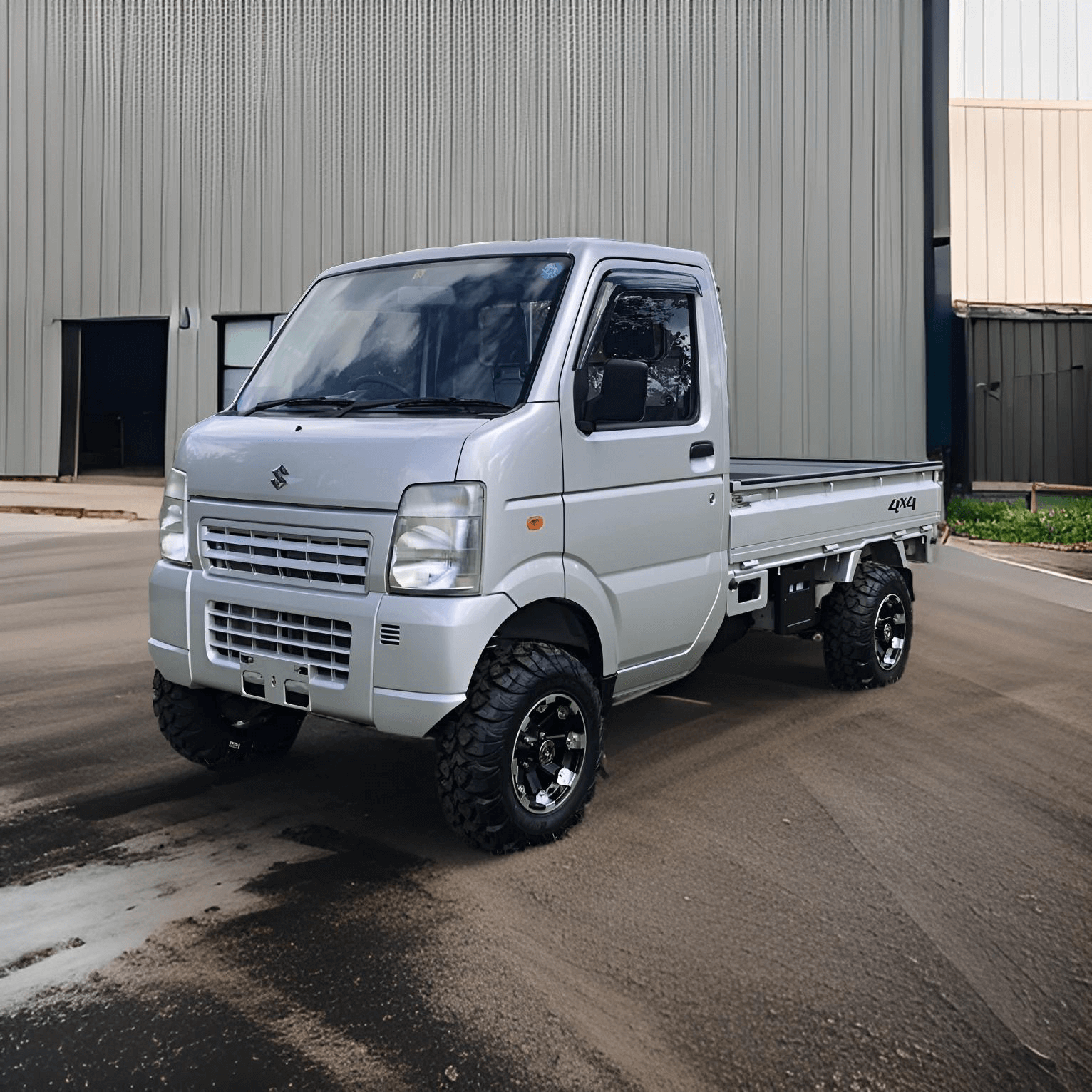
KEY HIGHLIGHTS
- Extended truck bed (Truck)
- Short Wheelbase Version (Truck)
- Larger glove box
- Turbo Engine Models
- Diff Lock Optional
- High Roof Van
SIZE SPECIFICATIONS (Truck)
- Body Height: 70.47 inches
- Body Length: 133.66 inches
- Body Width: 58.07 inches
SIZE SPECIFICATIONS (Van)
- Body Height: 70.47 inches (Standard)
- Body Height 73.82 inches (High Roof)
- Body Length: 133.66 inches
- Body Width: 58.07 inches
ENGINE (K6A NA)
- Engine: 658cc 3-Cylinder,12 Valve, Water-Cooled
- Horsepower : 43–48 hp typical
- Torque: 43–45.6 lb-ft typical
- Load Capacity: 772 lbs
ENGINE (K6A Turbo) - Every van/wagon only
- Engine: 658cc 3-Cylinder,12 Valve, Intercooled Turbo
- Horsepower : 63.1hp
- Torque: 71.5 lb-ft
- Load Capacity: 772 lbs
Suzuki’s Carry and Every: Bigger, Bolder, Better
Before we delve into the 11th-generation Suzuki Carry and Every, it's worth highlighting 2002-2012 model years, which saw several noteworthy upgrades. In 2002, Suzuki rebodied the Carry truck with a new frame, a more durable look, increased crash safety, and a transition to a front-mid engine layout, simplifying maintenance with easier engine access. An extended-bed Carry truck increased utility, complementing a Carry FC, which benefited farm work with its short wheelbase. Selectable 4WD and differential lock became available options, enhancing off-road performance, while the Wagon emphasized a passenger-centric design with added conveniences such as keyless entry and power steering. The Carry truck and Every van gained a larger glovebox, a fuel-injected K6A engine, and silver paint—a color also available for the Wagon.
New Look, New Codes: The Refreshed Carry Truck and Every Van Breakdown
Suzuki’s Carry from 2002 to 2014 were built under these specific chassis and trim combinations.
| Chassis Code | DA63T |
DA65T |
DA64V |
DA64W |
| Drivetrain | 2WD/4WD |
2WD/4WD |
2WD/4WD |
2WD/4WD |
| Powertrain | 658cc 3-Cyl, |
658cc 3-Cyl, |
658cc 3-Cyl, |
658cc 3-Cyl, |
| Trim Levels | KC |
FC |
GA |
JP |
| Vehicle Type | Truck |
Truck |
Van |
Wagon |
2013-Present: Suzuki Carry & Every Enter Their 11th Act with Flair
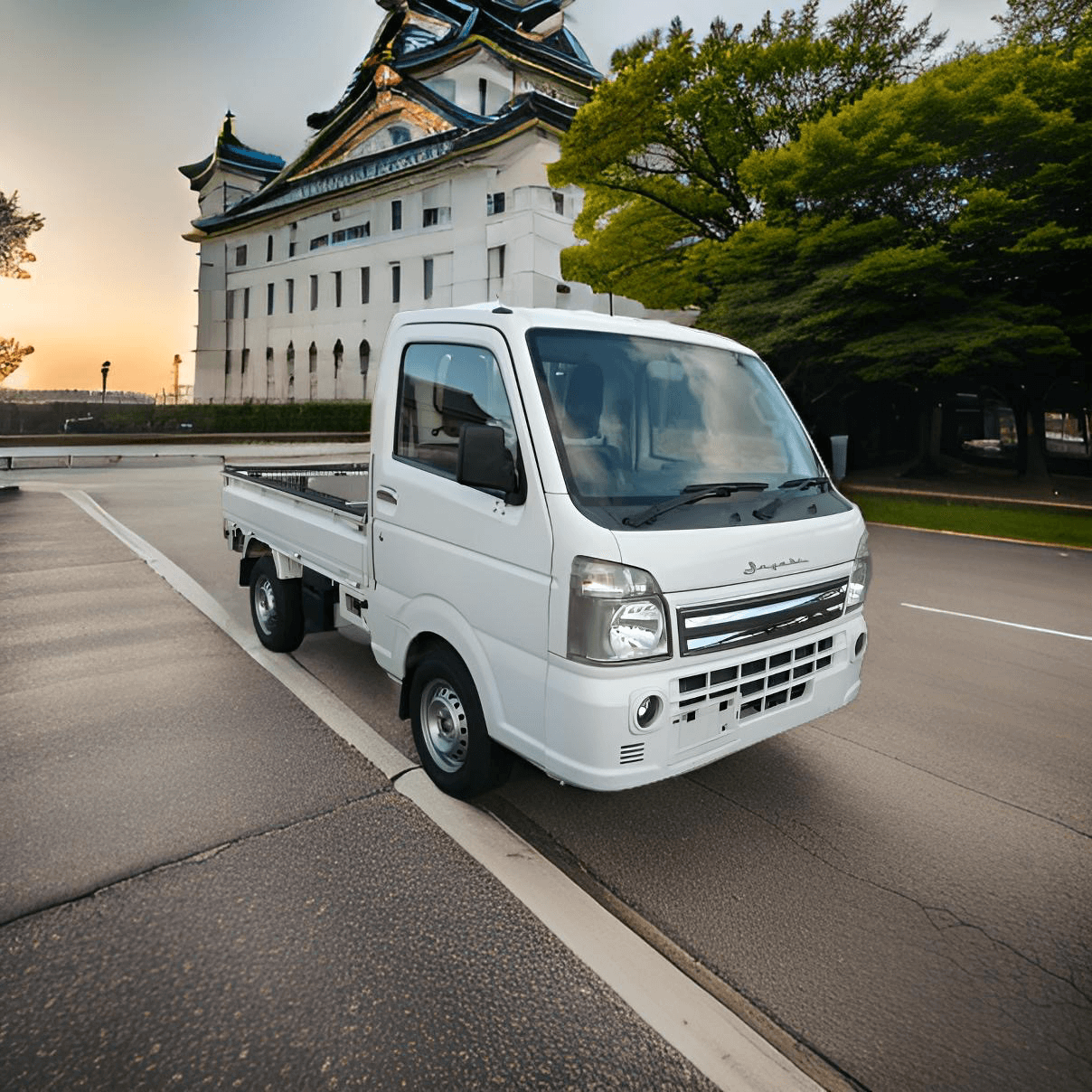
KEY HIGHLIGHTS
- Extended flatbed: 77.75x55.51 inches
- Fuel efficiency: 47.5MPG
- Electric power steering
- Extended Cab (Truck)
- Safety: advanced electronics
- Foldable rear seats
- Reinforced Chassis Frame
Truck Features
- Extended Bed: 2.03m
- Dump Truck Options
- Gate Lifter Capability
- Food Carrier Option
- Bike Carrier Option
- Diverse Color Choices (Silver, Navy Blue)
- Short wheelbase for DA16T Carry
- Reinforced Undercoating
- 350kg Gate Lifter
- Turning Radius: 3.6m
- Fuel Economy: 44 MPG
- Tailgate: Low-set Design
Van Features
- Wheelbase Extended
- Cargo Capacity Increased
- Fuel Efficiency: 48 MPG
- Total Weight Reduced: 40kg
- Smart Storage: Enhanced
- Seats Foldable
- Wheelchair-Friendly: Winch Included
- Entry System: Keyless
Both Model Features
Parking sensors (First time for a kei truck)
Automated Manual Transmission (Similar to Tiptronic)
SIZE SPECIFICATIONS (Truck)
- Body Height (Regular Cab): 69.49 inches
- Body Height (Super Carry): 74.21 inches
- Body Length: 133.66 inches
- Body Width: 58.07 inches
SIZE SPECIFICATIONS (Van)
- Body Height (High Roof): 75.20 inches
- Body Height (Standard): 71.46 inches
- Body Length: 133.66 inches
- Body Width: 58.07 inches
ENGINE (R06A NA)
- Engine: 658cc 3-Cylinder, 12 Valve, EFI
- Horsepower: 49.3hp
- Torque: 46.3 lb-ft
- Load Capacity: 772 lbs
ENGINE (R06A Turbo)
- Engine:658cc 3-Cylinder, 12 Valve
- Horsepower: 63.1hp
- Torque: 70.2 lb-ft
- Load Capacity: 772 lbs
Starting in 2013, the 11th-generation Carry truck transitioned to a single short wheelbase, a new platform, and an R06A 658cc 3-cylinder engine, offering more power, efficiency, and lower emissions. The model’s use of high-tensile steel reduced weight and increased durability, and an enhanced approach angle helped conquer steeper slopes.
Drivers received a compact 3.6m turning radius for more straightforward navigation within tight spaces, and the flatbed size is one of the largest within the kei class. Ergonomic seats with sliding adjustments, power steering, and available dual-airbags added modern touches.
2018 - Present: Suzuki Super Carry - Hustling Hard, No Breaks Needed
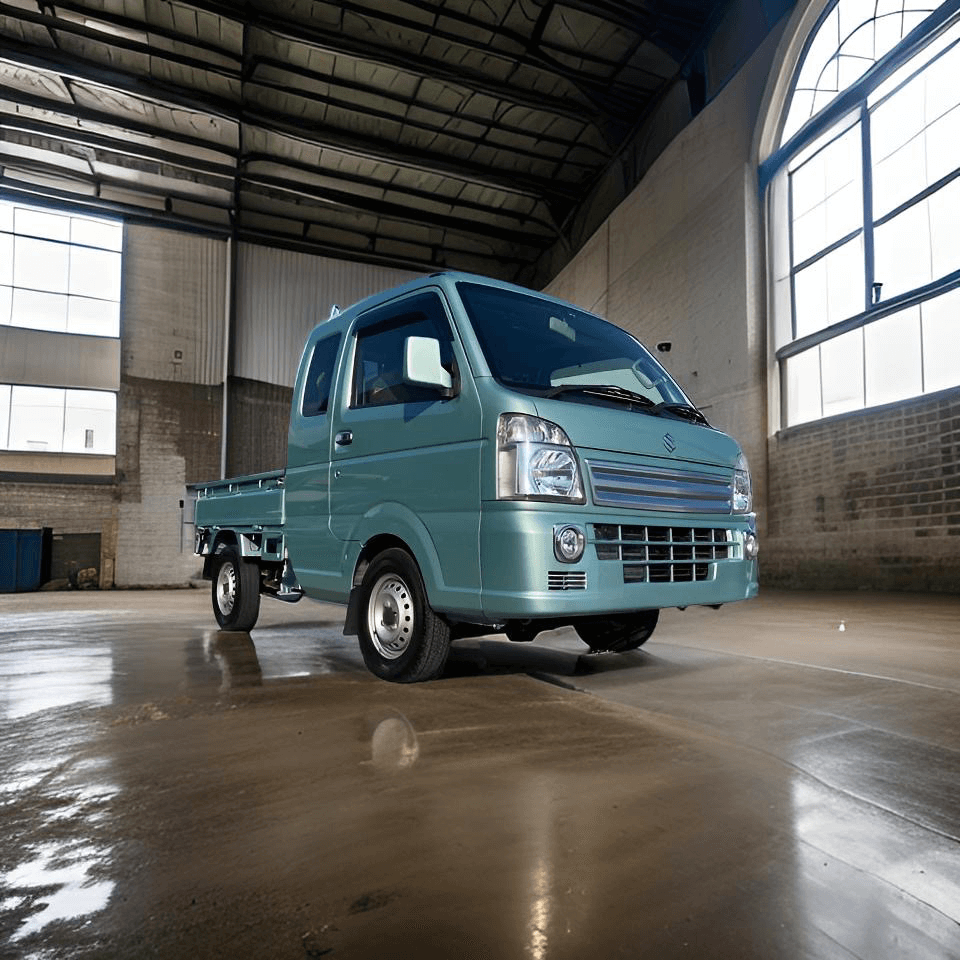
Suzuki launched its Super Carry globally in 2018, targeting business owners who require more hauling space and comfort than traditional kei trucks. This model’s extended cab provides extra storage behind the seats, while its more robust 1.2L petrol and 1.3L turbo-diesel engines produce additional torque, aiding load-carrying. Suzuki equipped the Super Carry with durable elements like a reinforced chassis, heavy-duty axles, and export-grade rust-proofing.
Decoding the 11th: Suzuki’s Carry Trucks & Every Vans Hit Fresh Digits
Dive into the 11th generation Suzuki Carry's DNA.
| Chassis Code | DA16T |
DA17V |
DA17W |
| Drivetrain | 2WD/4WD |
2WD/4WD |
2WD/4WD |
| Powertrain | 658cc 3-Cylinder, 12 Valve, EFI |
658cc 3-Cylinder, 12 Valve, EFI |
658cc 3-Cylinder, 12 Valve, EFI |
| Trim Levels | Agriculture Special |
PA |
JP Turbo |
| Vehicle Type | Truck |
Van |
Wagon |
Looking For Suzuki Carry Parts?
We offer a wide selection of Suzuki Carry truck parts, and continually add to our inventory. From service essentials that keep you on the road to accessories that set your Carry apart, our extensive catalog offers a range of ways to optimize your ownership experience. Browse our site to see what we have available, or let us know if you’re looking for something specific.
Learn About Other Kei Trucks
While the Suzuki Carry is an essential part of the kei market, we specialize in providing information on and parts solutions for several other popular models, such as Honda’s Acty, Mitsubishi’s Minicab, Daihatsu’s Hijet, and Subaru’s Sambar. If you’re more interested in a Kei van, check out our Honda Vamos (1999-2018) parts and accessories page.







